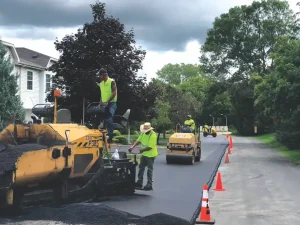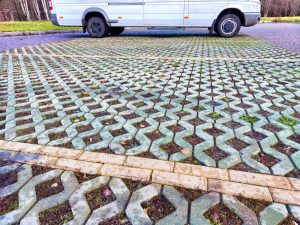We all wish our asphalt surfaces would last forever, but the reality is that some cracks are going to form no matter what we do. More important than the cracks themselves, how are we going to fix those cracks before they compromise entire sections of the asphalt? Keep reading to find out which things to consider when crack filling.
Season and Temperature
One of the most important factors affecting crack filling is the ambient air temperature. If there is lots of moisture in the air, for example, this moisture can be caught in the filler and lead to structural issues later. Ideally, you want to time your filler curing process such that it is done around the cold months in your area. This is when the cracks are the most open, thus making it easier for the filler to push its way into every nook and cranny of the affected area. The best practice is to begin crack filling when the ambient air temperature is between 45 and 65 degrees.
Safety
Safety is emphasized throughout the paving industry, and crack filling is no different. The major hazard here is the temperature of the hot pour material being used to fill the cracks. The hot pour can reach temperatures of 350 degrees Fahrenheit! This is more than enough heat to severely burn someone, and even cause them to lose digits or limbs. If a single drop of this hot pour splashes and hits someone in the face, they could lose an eye. Make sure everyone on the job site participating in fixing cracks should be wearing proper clothing and protective equipment. If you have timed the fixing up correctly, it shouldn’t be too hot under all the protective clothing either!
Traffic Control
This coincides with taking proper safety precautions. The last thing you want is a child or pet walking by to be injured by the searing temperatures of the filler. Make sure you take into account walking traffic as well as automobile traffic. The best practice is to use orange traffic cones to keep people and animals alike from walking on the newly-filled cracks. This not only protects the traffic but the filler itself from damage. Create a traffic control plan before you start the job so you can get all of the equipment you need. You may need to consider the time of day, traffic volume, and how long the curing time of the filler is. This will help you execute the entire filling process with the least amount of headache. The curing time will depend on the type of filler as well as the brand. Each brand has slightly different ingredients, so the curing time will differ by at least a few minutes. The size of the crack will also determine how long curing will take. Ideally, you want the area to be free of foot and car traffic for the entire curing process. As stated earlier, the filler is so hot that it could even damage car tires, so keep the filled area clear at all times during the curing process!
Our Services
Looking for a new asphalt parking lot or have questions on aftercare? Pro-Pave, Inc. is a premier commercial concrete and asphalt paving company serving general contractors, property managers, and HOAs in the Mid-Atlantic. We are Class A-licensed, VDOT-certified, and fully bonded/insured for jobs of all sizes.
We work with many commercial clients, including federal, state, and local governments; commercial property owners; K-12 schools; higher education institutions; military groups; retail stores; and more.
Visit our website or contact us to learn more about our services.





